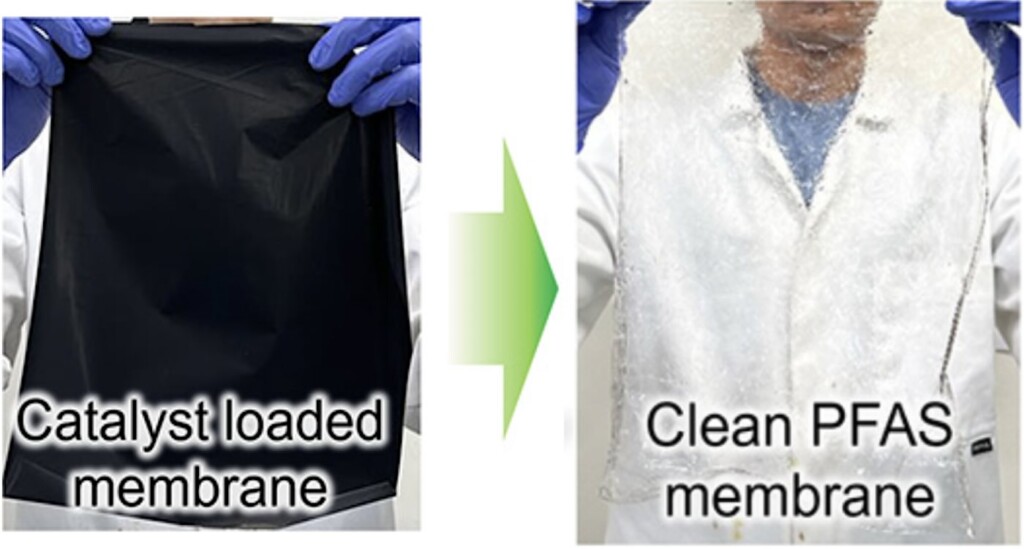Breakthrough in Fuel Cell Recycling Turns ‘Forever Chemical’ Problem into Renewable Resour
May 11, 2025

A new technique that uses sound waves to separate materials for recycling could help prevent potentially harmful chemicals leaching into the environment.
Researchers at the University of Leicester in England have achieved a major milestone in fuel cell recycling, developing a technique to efficiently separate valuable catalyst materials from the fluorinated polymer membranes (PFAS)—often referred to as ‘forever chemicals’.
The new method addresses critical environmental challenges posed by PFAS which are known to contaminate drinking water and have serious health implications.
Fuel cells and water electrolyzers are essential components of hydrogen-powered systems that power cars, trains and buses, and they depend on catalyst-coated membranes (CCMs) containing precious platinum group metals.
However, the strong adhesion between catalyst layers and PFAS membranes has made recycling difficult. The new scalable method uses organic solvent soaking and ‘ultra-sonication’ to effectively separate these materials. (Watch the process in a video below…)
“This method is simple and scalable,” said Dr. Jake Yang, working in the University’s chemistry department, in a media release. “We can now separate PFAS membranes from precious metals without harsh chemicals—revolutionizing how we recycle fuel cells.”
ALSO CHECK THIS OUT: Chicken Feathers Can Replace ‘Forever Chemicals’ in Renewable Hydrogen Fuel Cells, Lowering Cost
“Fuel cells have been heralded for a long time as the breakthrough technology for clean energy but the high cost of platinum group metals has been seen as a limitation. A circular economy in these metals will bring this breakthrough technology one step closer to reality.”
Building on this success, a follow-up study introduced a continuous delamination process, using a custom-made blade sonotrode that uses high frequency ultrasound to split the membranes and accelerate recycling. The process creates bubbles that collapse when subjected to high pressure, meaning the precious catalysts can be separated in seconds at room temperature.
The innovative process, invented in collaboration with the Johnson Matthey company, is both sustainable and economically viable, paving the way for widespread adoption.
“The development of high-intensity ultrasound to separate catalyst-loaded membranes is a game-changer in how we approach fuel cell recycling,” said Ross Gordon, Principal Research Scientist at Johnson Matthey.
As fuel cell demand continues to grow, this breakthrough contributes to the circular economy by enabling efficient recycling of clean energy components to address future environmental challenges before they become overwhelming.
RELATED: First Flight of Regional Jet Powered by Hydrogen Fuel Cells–40-Seater is Largest Ever to Fly
WATCH the simple and speedy process below…
SHARE the Good News With Hydrogen Fuel Fans on Social Media…
Search
RECENT PRESS RELEASES
Related Post



